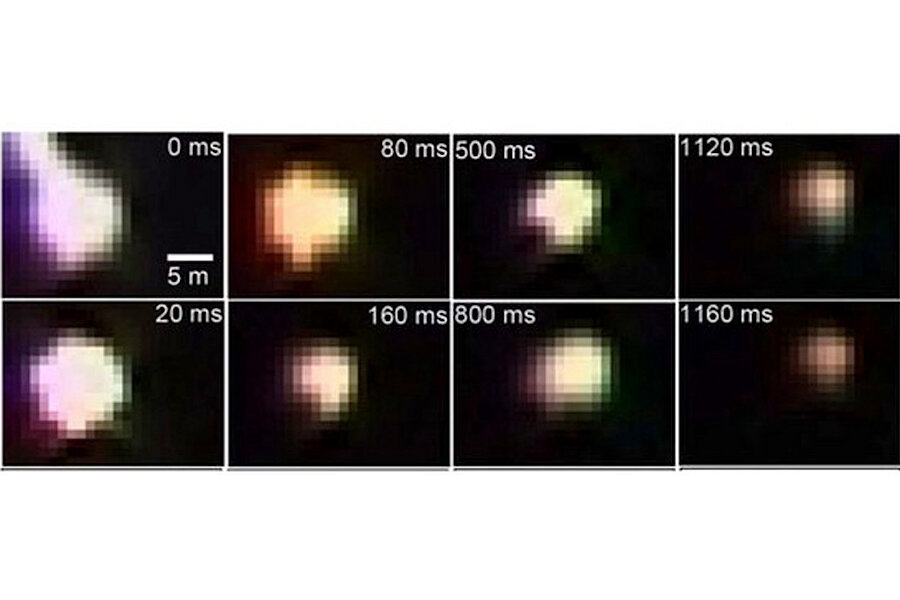Mysterious 'ball lightning' captured on video
A video recorded by accident of ball lightning in China is now shedding light on the phenomenon's mysterious origins, researchers say.
Ball lightning occurs as glowing spheres ranging in size from a golf ball to a very large beach ball (1 to 100 centimeters, or 0.4 inches to 39 inches, in diameter). These fiery orbs can be white, yellow, red, orange, purple or green, and can persist for seconds or even minutes. Ball lightning typically appears during thunderstorms and usually hovers near the ground, drifting over the Earth at a few miles per hour, but it has also been seen on ships and even within airplanes.
Over the centuries, people have reported thousands of sightings of ball lightning. However, these occurrences are rare and unpredictable in nature; as a result, "our knowledge of ball lightning so far is based mostly on accidental, eyewitness reports," said Eli Jerby, a microwave researcher at Tel Aviv University in Israel, who did not take part in this study. [Countdown: Earth's Weirdest Lightning]
Chance video
Scientists, including Jerby, have previously recreated ball lightning, or something very much like it, in the lab, results that suggested ball lighting was mostly the result of lightning striking the ground and vaporizing minerals in the soil. Still, it remained uncertain whether natural ball lightning really happened in the way that the experiments suggested.
This latest recording adds valuable new information, even though it happened unintentionally. During field work investigating ordinary lightning in Western China on a summer night in 2012, scientists by chance took a high-speed video of natural ball lightning from a distance of about 3,000 feet (900 meters). The giant orb shed light over an area up to about 16 feet (5 m) in diameter and moved about 19 mph (31 km/h) before dissipating.
The ball lightning was visible for only a scant 1.64 seconds. Nevertheless, this was enough time for the researchers to analyze its light, which is important because
the color of light an object gives off can yield insights on its makeup. Elements and molecules each give off very specific patterns of color when heated that can act very much like fingerprints.
Changing colors
The ball lightning changed from purple to orange to white to red before it faded. The Chinese scientists detected traces of soil elements such as silicon, iron and calcium from the ball lightning. These results may be the first thorough measurements of natural ball lightning, said Jerby.
These findings support the notion that conventional lightning striking the soil generates ball lightning.
"The new results shed light on the ball lightning enigma and provide valuable information about its initiation, evolution and properties," Jerby told LiveScience's OurAmazingPlanet.
In the future, "a more comprehensive theory of ball lightning needs to be derived in a manner that incorporates parts of the many independent theories existing in the literature," Jerby said. In addition, "valid laboratory demonstrations of ball lightning shall be developed, possibly advancing our fireball experiment, in order to demonstrate the main characteristics of the natural ball lightning in the lab."
The scientists who took video of the ball lightning detailed their findings online Jan. 17 in the journal Physical Review Letters.
Follow OurAmazingPlanet @OAPlanet, Facebook and Google+. Original article at LiveScience's OurAmazingPlanet.
- Electric Earth: Stunning Images of Lightning
- Fishy Rain to Fire Whirlwinds: The World's Weirdest Weather
- Infographic: How Lightning Works
Copyright 2014 LiveScience, a TechMediaNetwork company. All rights reserved. This material may not be published, broadcast, rewritten or redistributed.






